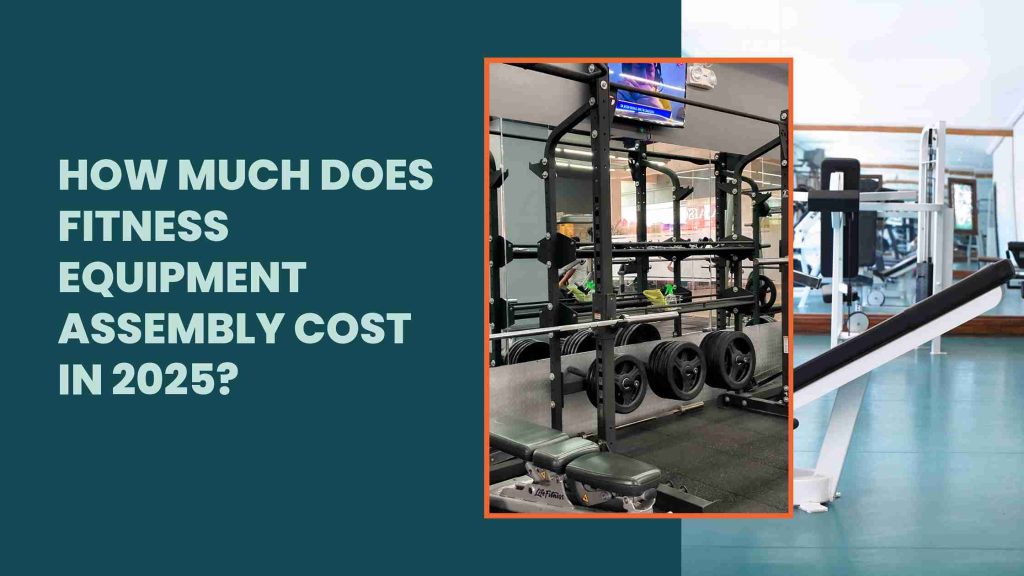Introduction: The Demand for Professional Assembly Is Rising
In 2025, fitness has become more personalized, more tech-integrated, and more home-based than ever before. With the rise of hybrid workouts and connected exercise machines, homeowners are increasingly investing in personal wellness spaces. But along with that comes a common question: how much to assemble gym equipment?
As home gyms grow more complex, so does the need for proper setup. From treadmills with Bluetooth touchscreens to all-in-one smart resistance machines, these items often require more than just unpacking and plugging in. That’s why the demand for professional fitness equipment assembly services has surged—and why understanding the real fitness equipment assembly cost matters before you buy.
Price Ranges Based on Equipment Type (Bike, Treadmill, Home Gym System)
Different types of exercise machines come with different levels of complexity—and therefore different installation costs. Here’s what homeowners can expect to pay for typical fitness gear in 2025:
| Equipment Type | Estimated Assembly Cost (USD) |
|---|---|
| Stationary Bike | $90–$130 |
| Treadmill | $120–$180 |
| Rowing Machine | $100–$150 |
| Elliptical | $130–$200 |
| Multi-Gym/Home Gym System | $200–$400+ |
| Squat Rack or Smith Machine | $150–$300 |
| Wall-Mounted Pull-up Bars | $80–$120 |
For smart or integrated systems (like Tonal, Peloton, or NordicTrack Fusion), you may see even higher prices due to delicate electrical components and smart setup needs. For example, the treadmill installation service cost can reach $200+ if wall anchoring or floor stabilization is included.
Factors Affecting the Cost (Complexity, Location, Delivery Coordination)
While the base cost depends on equipment type, several additional factors influence gym equipment installation pricing.
1. Complexity of the Equipment
Machines with more parts, built-in displays, or adjustable settings typically cost more to assemble. For instance, an elliptical with incline, pulse sensors, and a smart display will take longer (and cost more) to install than a basic rowing machine.
2. Location of Setup
Assembly in a ground-floor garage is simpler than carrying equipment upstairs to a bedroom or basement. Expect additional fees for:
- Stair carries
- Tight doorways or narrow hallways
- Outdoor installations (e.g., covered patios)
3. Delivery Coordination
Some companies offer “white glove” service that includes delivery, unpacking, and assembly. If your equipment arrives separately or in multiple boxes, you might pay extra for consolidated setup.
4. Regional Labor Rates
Your zip code matters. Urban centers tend to have higher labor rates than suburban or rural areas. For example, the fitness equipment assembly cost in San Francisco or New York may be 20–30% higher than the national average.
5. Timing and Rush Requests
Need it assembled today or on a holiday? Be prepared for a premium. Many services offer same-day options—but they come at a price.
Hidden Costs to Avoid: Tools, Reassembly, Repairs
While pricing quotes often cover basic assembly, there are hidden or surprise charges homeowners should keep in mind.
1. Missing Tools
Some lower-cost services may assume you have basic tools available (like a socket wrench, hex key, or torque driver). If the technician has to leave and return, it may cost extra.
2. Reassembly or Moves
Moved recently and need your treadmill put back together? Reassembly after transport or storage is often more expensive than new assembly due to wear and part misalignment.
3. Wall Mounting or Anchoring
If your machine needs to be secured to the floor or wall (e.g., squat racks or smart gym systems), expect to pay $50–$150 extra for anchoring, especially if structural modifications are needed.
4. Repair During Assembly
If missing or damaged parts are discovered mid-installation, you may be charged for troubleshooting time or return visits. Always inspect your boxes for damage before booking a service.
Understanding these can help you budget smartly and avoid surprises during gym equipment installation pricing negotiations.
DIY vs. Professional Comparison
Many fitness enthusiasts consider assembling equipment themselves. But is DIY really worth the savings?
DIY Assembly
- Pros: Free labor, flexible timing, good for simple machines
- Cons: Time-consuming, high risk of errors, no warranty protection
A basic spin bike might take 45 minutes to an hour to set up with basic tools. A complex home gym? Expect 4–6 hours of labor, lifting, confusion, and occasional frustration.
Professional Assembly
- Pros: Fast, clean, and safe installation; warranty-backed
- Cons: Costs more upfront
Professionals come with the tools, the experience, and often offer guarantees. If a mistake happens, they fix it—at no extra charge. For tech-enabled or high-value machines, this peace of mind is well worth the investment.
When comparing how much to assemble gym equipment, always consider time, potential damage, and your own comfort level with mechanical tasks.
Final Thoughts
With home gyms continuing to rise in popularity in 2025, getting your equipment assembled right the first time is crucial. Knowing the real fitness equipment assembly cost allows you to budget effectively, avoid delays, and start your wellness journey without setbacks.
Whether it’s a simple spin bike or a fully loaded multi-station power cage, investing in professional installation can save you time, frustration, and possible repair costs later on. From base pricing to hidden fees, there’s a lot to think about—but making an informed decision helps ensure your equipment is safe, secure, and ready to use.So next time you’re browsing for a new treadmill or gym machine, don’t forget to factor in the treadmill installation service cost or setup fees. It might be the smartest part of your entire purchase.



